To run the forums, host the website, and travel, I charge a universal service fee for my reviews. This review was sponsored by the Electric Bike Company. My goal is to be transparent and unbiased, this video and written review are not meant to be an endorsement of Electric Bike Company products.
The Electric Bike Company is known first and foremost for making electric bikes, of course, but they also have an impressive selection of accessories. Most of these accessories are designed and built by the Electric Bike Company specifically for use with their bikes, which I appreciate because that means great compatibility and fit, not to mention being visually cohesive. Their newest model is the EBC Solar Panel, which features a lightweight folding design and is capable of 150 watts of power under optimal conditions. That’s great output, but what I’m most excited about is the portability offered by the folding design. While the unfolded panel is about 12 square feet, it folds down to just one square foot, and when inside its carrying case it can mount easily on the side of a rear rack. The entire package – case, panel, converter, and cables – weigh only 13.1 pounds! Considering a standard rear rack weight capacity of 52 pounds or so, this leaves plenty of extra weight for carrying additional items. This opens up a huge window of possibilities for off-the-grid camping and longer trips, but this freedom doesn’t come cheap with the EBC Solar Panel being priced at $699.
The construction of this panel gives it a nice durable feel, with thick black vinyl serving as the backing for the panels and providing the flexibility for folding. The folding pattern results in the solar panels being on the inside protected by several layers of thick vinyl which I appreciate, that will help keep them safe from bumps not to mention bad weather if you get caught riding in a storm. When unfolded the panel takes up about 12 square feet at 4×3, and there are metal eyelets on the long edges which can be used to fasten the panel down to a variety of surfaces. The controller has a nice heft to it and uses standard connectors for connecting to the solar panel and the battery cable, and I appreciate that it is well labeled with electrical specifications, pictures to show which component to connect where, and an activity light that flashes when power is flowing. The cables are thick and well shielded, although I did notice one connection point that had a gap in the external covering which I’ll be covering with electrical tape to prevent any wear and tear. Transporting this panel is made easy thanks to the folding design, folding down to about a foot on each side and only three inches thick! There are velcro strips to make sure the panel stays folded, as well as a thick rubber handle on the top for easy carrying by hand. The additional canvas carrying case fits the folded panel perfectly and has an inner pocket designed to hold the controller and cabling. For reference, the dimensions of the case when carrying all components is 14″ x 13.5″ x 3.5″. The case is tastefully designed and kept shut by a combination of more velcro plus a strap and clamp on the front, and it has removable hooks for the rear that are the perfect size and position for mounting on the side of a rear rack. One thing I’d like to call out on these hooks is that they just rest on the rear rack without actually fastening to it, which means that the case can bounce loose pretty easily if you jump a curb or hit a large bump. Fortunately, there are ways you can work around this, the hooks would be easy to replace with something a little more secure, or if you are carrying anything else on the top of the rear rack it would also serve to hold down the hooks.
Operation of this solar panel is nice and simple: Unfold it, connect the panel to one end of the controller, connect the other end to the battery on your bike, and you’re off to the races! The different connection points on the controller are clearly labeled, and the connectors themselves have clear warning labels about not disconnecting them under load – you would want to disconnect your battery first before disconnecting the rest of the components. Once everything is connected the activity light on the bottom edge of the controller flashes to indicate that charging is in progress. The big question is, just how fast is this thing when it comes to charging? This is a 150-watt solar panel, and according to the Electric Bike Company, it can charge one of their standard batteries (48v, 11.6ah) in just four hours. I didn’t want to drain my battery all the way to zero as that is pretty hard on the cells, so I started charging while my battery was at 50%. This was on a warm (about 75 degrees) sunny day, and it took a total of 1 hour and 39 minutes to get to full charge – not bad at all! Keep in mind that the battery readout on these bikes is in 25% increments, so I don’t have a way of knowing if it was actually at 50% or maybe a little bit higher than that… regardless, it certainly seems that this panel can charge as quickly as advertised. Once you’re finished charging simply unplug your battery first, and then fold the panel back up and you’re all done.
This solar panel comes with everything you need to connect to and charge batteries made by the Electric Bike Company. So, what if you wanted to use it to charge something else? I can see a lot of use cases for this, for example, you might already have an Ebike that you love but you want a solar charger for it. Or perhaps you want to also use it to charge deep-cycle batteries in your camper. There are tons of situations where having a folding solar panel would be super handy, and you could potentially do that with the EBC Solar Panel… but you’ll have to invest in some extra cabling and probably a different controller depending on what you want to charge. This panel uses standard MC4 connectors so adding the extra functionality would be pretty easy, and you could use the original controller if the battery you are charging is of the 48-volt or 60-volt variety. Let’s say you have a different Ebike that has a 48-volt battery but a completely different charging connector, you would need a charging cable with the appropriate charging connector on one end and the MC4 connectors on the other… so how feasible is that? It’s unlikely that the manufacturer of your bike would provide such a cable so you’d have to either make it yourself or pay someone with the necessary skill to do so. For other non-Ebike charging applications, it would be a lot easier to find the required cabling and/or controller hardware already available for purchase, but of course, this would be an added cost on top of a solar panel that is not cheap to begin with.
There are a lot of solar panel solutions available today, so how does the EBC Solar Panel stack up against the competition? You could buy solar panels with similar output for a lot less than the $699 price tag here, but then you’d also have to purchase a controller and cabling, do the work to set everything up… and you wouldn’t have any of the portability you get with the EBC Solar Panel. For me that portability is the big win here, combined with the absurdly simple ease of use; this panel is easy to set up and use, easy to fold and pack up, easy to transport on a bike or anywhere else. Yes, there are lots of portable solar panel solutions out there, but everything I’ve seen is either a lot bulkier and more difficult to transport, or they have significantly lower power output. I also really appreciate the sturdy construction and tasteful design of the EBC Solar Panel, it has a nice rugged feel to it and I wouldn’t hesitate to bring it along for a camping trip or long-distance trek. The warranty is also impressive, covering this solar panel for eight years!
As always, I welcome questions and feedback in the comment section below. Whether you own this solar panel, have seen it in action, or are brand new to the space, my goal is to provide an objective and honest resource. You can also join the Electric Bike Company forums and share your own photos, videos, and review updates to help others! Have fun out there, and ride safe :)
Pros:
- Extremely portable thanks to folding design and lightweight material
- Simple to use, just unfold and plug in
- Panels-inside folding design and carrying case protect the solar panels from physical and weather damage
- Sturdy construction of the vinyl panel base and canvas case, thick shielded cabling, and metal eyelets for securing the panel while unfolded
- Standard connectors mean you could easily adapt this for use with other bikes or batteries
- Fast charging times under optimal conditions, able to charge a 48v 11.6ah battery in about 4 hours
Cons:
- The included hooks for hanging on a rear rack aren’t very secure and will easily bounce off if you hit a large bump at speed, but you could swap them out for something more secure, also placing other items on the rear rack will hold everything down
- Only compatible with bike batteries from the Electric Bike Company (or others with similar charging ports), but you could add extra compatibility with different cables or controller
Resources:
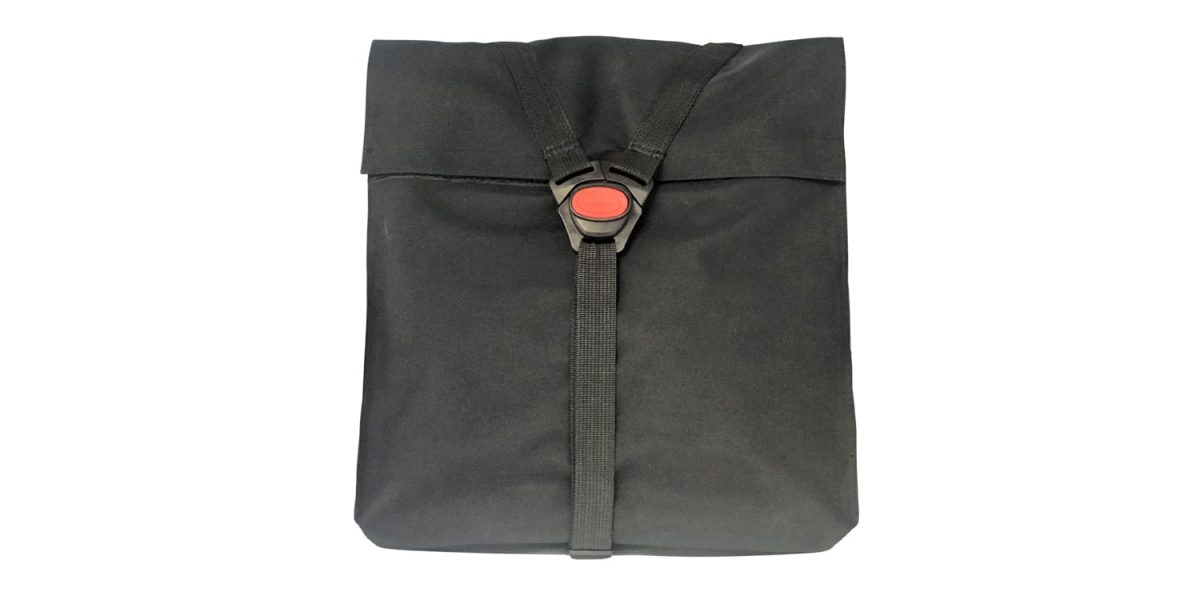







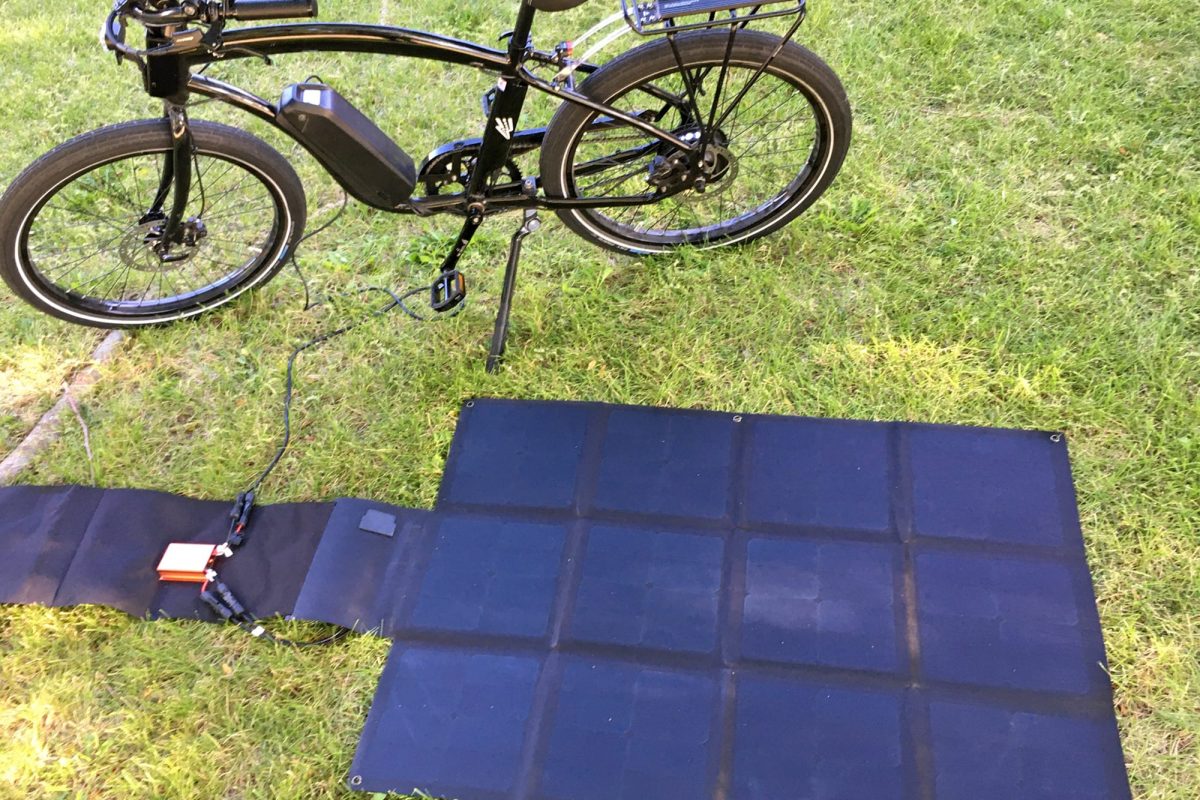
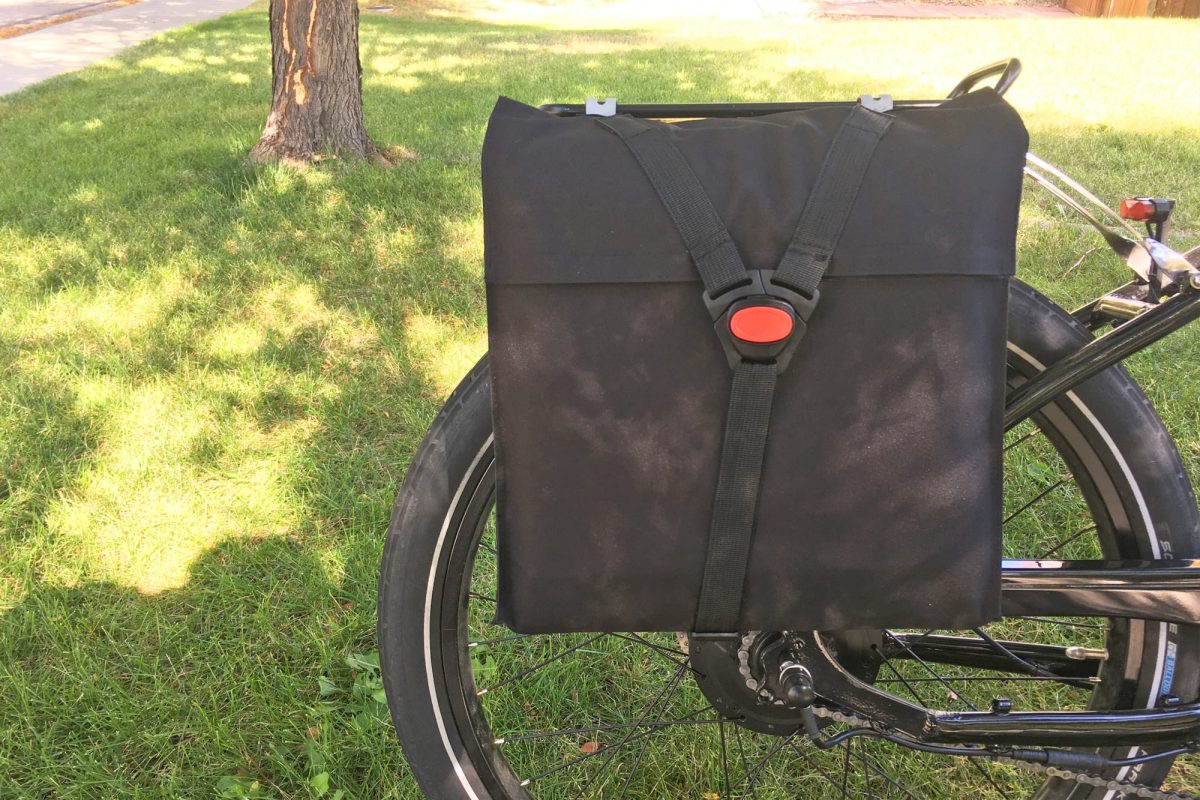
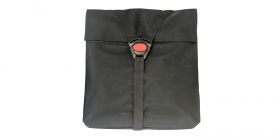
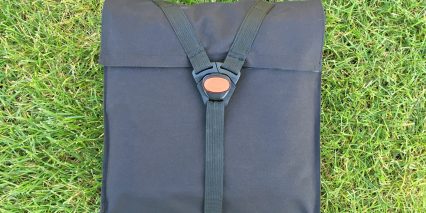
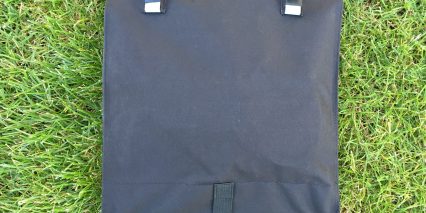
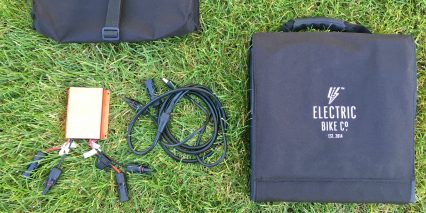
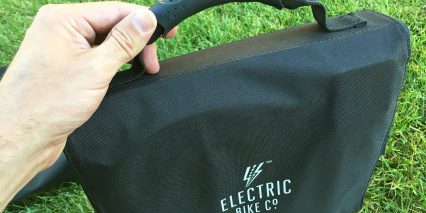

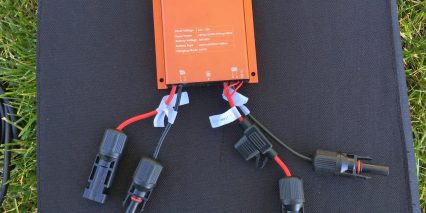
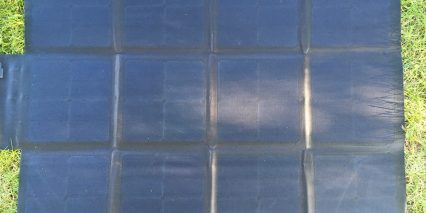
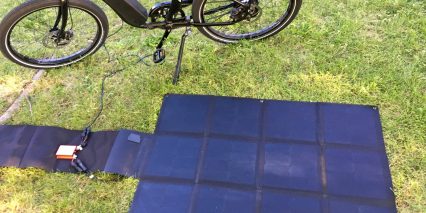


Mike
5 years agoI like
ReplyCourt
5 years agoSweet! Me too, it’s neat to see an official ebike solar panel… even if it’s primarily designed for their own products. The pannier connection design is sleek, but I could see them improving the hooks and maybe adding a mid-clasp or bungee in the future :)
ReplyTheAntidote
5 years agoI cant wait to see the real world output! looks super interesting! Thanks EBR!
Mike
5 years agoThanks for the comment. I met a traveling biker 2 months ago who wanted to go electric if he could solar charge it. Well here it is!
ReplyCourt
5 years agoThat’s awesome! I love this kind of stuff… Tyson is on the road today and preparing to cover more bikes. We’re all excited about how this industry is going and all of the neat gear coming out :D
ReplyJD
5 years agoI have a Juiced Bike. Could I use this solar panel by simply adding an adapter to the cord that goes into the battery? And, if so, where could I get such an adapter?
Thanks for your great web site and the reviews on youtube. I watch for them on a daily basis!
ReplyEric B.
5 years agoGAK! Over 13 lbs.!? Not for me or back country camping. Maybe West Marine has some foldable panels for less.
ReplyCourt
5 years agoHi Eric, yeah! I’m excited to see more lightweight folding/rolling solar charger options in the future. For now, it seems like the options are limited, or you get to be very very expensive and need to custom wire an interface to work with an ebike battery. Thanks for your input about West Marine!
ReplyDaniel Cherry
4 years agoI have been looking for a solution to charging my e-bike so I don’t have range anxiety and I can go long distances. While my bike has the XLR plug. Could I use this for my eco trick hammer bike it’s the same voltage?
ReplyTyson Roehrkasse
4 years agoHey Daniel, in theory it would work… but would require some DIY work. The solar panel has MC4 connectors, then there is a custom MC4 charging cable that plugs in to EBC electric bikes. You would need a cable with MC4 on one end to connect to the solar panel, and then XLR on the other side to connect to your Ecotric battery.
If the voltage of your battery is the same, that *should* work, but please take that with a huge grain of salt! I am not an electrician and I haven’t tried such modifications before. This particular solar panel is also quite expensive, you could probably get a more generic panel setup for your bike for about half the price (or less). You could also just get a second battery to carry with you, then you don’t have to deal with the time delay required to charge via solar panel – very long if you get a cloudy day!
Reply